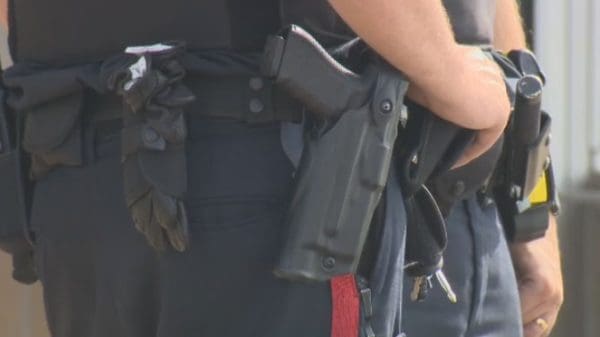Two recent federal appellate decisions are good reminders of how US judges may assess claims of excessive force where unarmed suspects are involved. Atty. Michael Brave, always a popular legal updater at ILEETA conferences and other venues, tells Force Science News that these cases “have many learning points” for trainers, police attorneys, and street officers alike . . .
Attempted gun grab, a violent scuffle, then flight unarmed
The first case began one night when a patrol officer in Tennessee stopped to offer assistance to two men tending to a flat tire alongside an interstate highway. When the men declined help, the officer decided to run their license plate and got feedback suggesting the car was stolen.
When the officer stepped out of his unit to investigate further, one of the men “leaned down inside” the stalled vehicle through the driver-side window as if, from the officer’s perspective, he “was reaching for a weapon.” When he rose from the car, he “did not appear to have a weapon in his hands,” according to the appellate decision, but matters escalated quickly nonetheless.
When the officer placed a hand on the suspect’s sleeve, the man swung two punches at the officer’s torso, then rabbited. He ignored commands to stop, but the officer tackled him to the ground.
During “several seconds of active struggle,” the two “exchanged punches” and the suspect “repeatedly grabbed at” the officer’s holstered sidearm without gaining control of it. The officer deployed his CEW into the suspect’s abdomen. When that proved ineffective, the officer unsuccessfully applied drive stuns to the suspect’s torso and neck and, in the process, “became tangled in the Taser wires [himself] and was shocked as a result.”
At one point, the suspect had the officer flat on his back and was straddling him, although he made no attempt to disarm him then.
When the attacker finally stood up and turned to flee, the officer drew his handgun and fired—three shots from the ground, three more after he scrambled to his feet. From first physical contact to final firing took 35 seconds. The suspect died from six GSWs, all to his back.
IMMUNITY DENIED. The suspect’s next of kin brought a Sect. 1983 legal action against the officer, alleging excessive force. The officer asked the federal district court to grant summary judgment in his favor on the ground of qualified immunity. The court refused, ruling that the case should go to a jury.
“[S]ome level of force [by the officer] was objectively reasonable under the circumstances,” the court said, but “the use of deadly force was not.” The officer “had no objective reason for believing that [his adversary] posed a serious threat while fleeing unarmed.” Thus, “a reasonable jury could conclude [the suspect] was not a threat to anyone when he turned and began to flee.”
The law is “clearly established that when an individual is obviously not armed and is attempting to flee at the time he was shot, the use of deadly force is typically unreasonable under the circumstances,” the court said.
The officer appealed to the 6th Circuit US Court of Appeals, which hears cases from KY, MI, OH, and TN.
APPELLATE ACTION. In a decision written by Judge John Marshall Rogers, a three-judge panel upheld the district court’s ruling.
In his appeal, the officer had argued that he had “probable cause to fear for his safety, even in the seconds after [the suspect] had turned to flee,” because the assailant had grabbed at his holstered sidearm “several times during their struggle.” The panel, however, was unpersuaded.
The reasonableness of the use of deadly force depends “primarily on objective assessment of the danger a suspect poses” at the “particular moment” lethal force is used, Rogers wrote. “Even if [the officer] had probable cause to fear for his safety during his struggle with [the suspect], it could well be that he lacked the same cause after the struggle had ended and [the suspect], still unarmed, had turned and begun to flee.”
This unpublished decision, Carden v. City of Knoxville (TN), can be accessed in full, free of charge, by clicking here.
